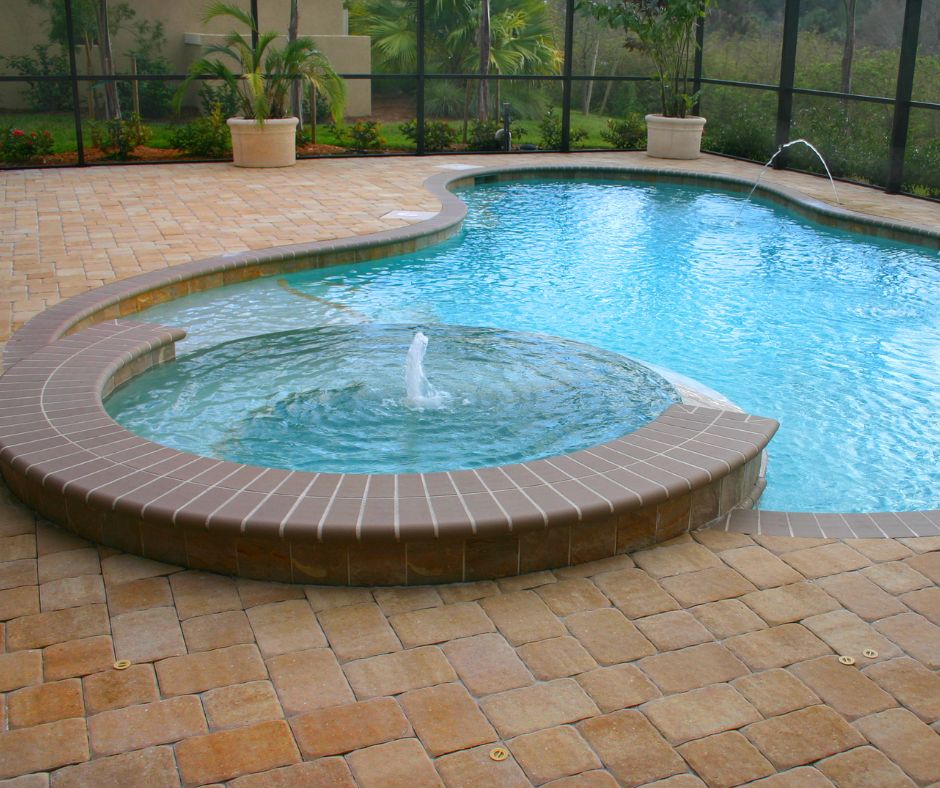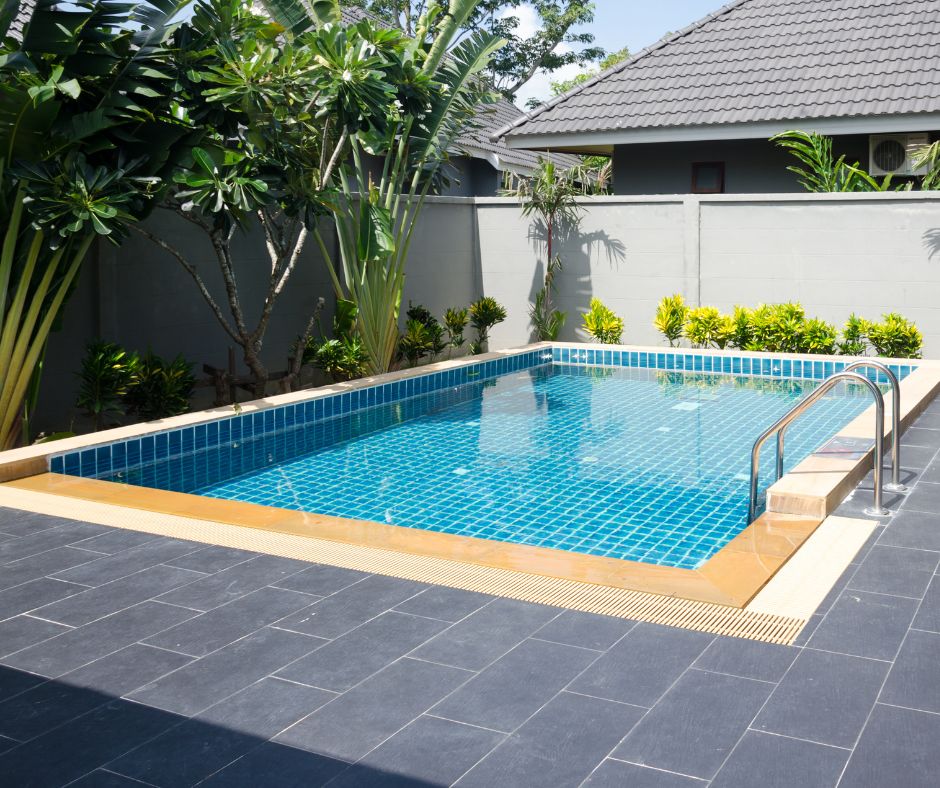When Should I Get My Swimming Pool Restored?
In light of recent news highlighting the importance of regular maintenance and restoration of swimming pools, it’s crucial to understand the signs that indicate it’s time to give your pool some much-needed attention. This comprehensive guide will delve into various aspects of pool maintenance, from recognising the initial warning signs to understanding the impact of your pool’s age on its condition. We’ll explore the unmistakable indicators of a pool in need of restoration, such as cracks and leaks, and discuss the importance of regular water quality testing.
So, whether you’re a long-time pool owner or a new entrant to the world of pool maintenance, this guide is set to become your go-to resource.

1. Recognising the Warning Signs: When Your Swimming Pool Needs Attention
It’s crucial to keep an eye out for signs that your swimming pool may need restoration. One of the most common indicators is a significant increase in water usage. If you notice that your pool is losing water at a faster rate than usual, it could be a sign of a leak. Leaks can cause serious damage to the structure of your pool and the surrounding area, so it’s important to address them as soon as possible.
Another sign to look out for is the condition of the pool surface. Over time, the surface of your pool can become rough and uncomfortable to touch. This is often due to the breakdown of the pool’s plaster or tile. Cracks, chips, and stains are all signs that your pool’s surface may need to be restored.
- Increased water usage: This could be a sign of a leak in your pool.
- Rough pool surface: If the surface of your pool is uncomfortable to touch, it may need to be restored.
- Visible cracks, chips, and stains: These are clear signs that your pool’s surface needs attention.
The Impact of Age: How Longevity Affects Your Swimming Pool’s Condition
Over time, your swimming pool will inevitably show signs of wear and tear. This is a natural process, but it’s important to recognise when these signs indicate that it’s time for a restoration.
Cracks in the pool’s surface, for instance, are not just an aesthetic issue. They can lead to leaks, which can cause significant damage to the pool’s structure and surrounding area.
Similarly, discolouration or staining of the pool’s surface can be a sign of chemical imbalances or algae growth, both of which can affect the pool’s usability and safety. If your pool’s equipment, such as the pump or filter, is frequently breaking down or not working efficiently, this is another clear sign that your pool may need restoring.
See the pool renovation project that we recently completed at Hunters Hill
Lastly, if your pool is consistently losing water, this could be due to a leak in the pool’s structure or plumbing, and should be addressed immediately.
3. Cracks and Leaks: Unmistakable Indicators of a Pool in Need of Restoration
One of the most significant signs that your swimming pool needs restoration is the presence of cracks and leaks. These are not just cosmetic issues; they can lead to serious structural problems if not addressed promptly. Cracks can allow water to seep into the surrounding soil, causing erosion and potentially damaging the pool’s foundation. Leaks, on the other hand, can lead to water loss, increased chemical usage, and higher utility bills. Therefore, it’s essential to take action as soon as these issues are identified.
If you notice a significant drop in your pool’s water level, it could be due to a leak.
Similarly, if you see damp spots around the pool or in the surrounding area, it could indicate a leak or crack.
Restoring a pool with cracks and leaks is not a DIY job. It requires professional expertise and the right tools and materials. The restoration process typically involves identifying the source of the problem, repairing the cracks or leaks, and then resurfacing the pool to ensure a smooth, watertight finish. In some cases, the pool may need to be drained before repairs can be made. Remember, the sooner you address these issues, the less damage they are likely to cause and the less it will cost to restore your pool to its former glory.
4. The Role of Water Quality: Understanding the Importance of Regular Testing
Maintaining the quality of your swimming pool water is not just about keeping it clear and sparkling. It’s also about ensuring the health and safety of those who use it. Regular testing is a crucial part of this process. By routinely checking the pH levels, chlorine content, and overall cleanliness, you can prevent the build-up of harmful bacteria and algae.
5. Pool Equipment Failure: How to Spot the Signs and What to Do Next
Spotting the signs of pool equipment failure early can save you from costly repairs down the line. Unusual noises, leaks, and inefficient operation are all indicators that your pool equipment may be in need of restoration. For instance, if your pool pump is making a lot of noise or your filter isn’t doing its job properly, it might be time to consider a restoration.
Similarly, a heater that isn’t heating your pool to the right temperature or a chlorinator that isn’t releasing enough chlorine could also be signs of equipment failure. It’s always a good idea to consult with a pool professional if you notice any of these signs.
When it comes to dealing with pool equipment failure, preventive maintenance is key. Regularly checking your equipment and addressing any issues as soon as they arise can help to prolong the life of your pool and its equipment.
6. The Aesthetic Factor: When Your Pool’s Appearance Signals a Need for Restoration
While functionality is a key aspect of any swimming pool, the aesthetic appeal cannot be overlooked. A pool that has lost its visual charm can significantly impact the overall look and feel of your outdoor space. Discolouration, stains, cracks, and a worn-out deck are all signs that your pool may need a restoration. These issues not only detract from the pool’s appearance but can also lead to more serious problems if not addressed promptly.
Restoring your pool’s aesthetics is not just about making it look good. It’s also about ensuring it remains a safe and enjoyable place for everyone. Slippery surfaces, loose tiles, and sharp edges are potential hazards that can result from neglecting your pool’s appearance.
In conclusion, the aesthetic factor plays a crucial role in determining when it’s time to restore your swimming pool. Not only does it affect the visual appeal of your outdoor space, but it also impacts the safety and enjoyment of your pool. Ignoring these signs can lead to more serious problems that can be costly to fix.

7. The Cost of Neglect: Financial Implications of Delaying Pool Restoration
Ignoring the need for pool restoration can lead to significant financial implications. Problems that seem minor, such as small cracks or discolouration, can quickly escalate into major issues if not addressed promptly. These issues can compromise the structural integrity of the pool, leading to costly repairs.
8. Taking the Next Step: How to Plan for Your Swimming Pool Restoration
When you’ve identified the signs that your swimming pool needs restoration, it’s time to start planning the process. The first step is to assess the extent of the damage or wear and tear. This will help you determine the scope of the restoration project. Consider factors such as the condition of the pool’s surface, the functionality of the filtration system, and the state of the pool’s accessories. It’s also essential to take into account any safety issues, such as loose tiles or damaged ladders.
to your use of the pool during the restoration process. With careful planning and consideration, you can ensure that your pool restoration goes smoothly and efficiently, resulting in a beautiful and functional swimming pool that you can enjoy for years to come.
Frequently Asked Questions
1. What are some common problems that indicate a need for pool restoration?
Common problems include cracks and leaks, poor water quality, equipment failure, and an outdated appearance. These signs indicate that your pool may be in need of restoration to ensure its safety, functionality, and aesthetic appeal.
2. How often should I test my pool’s water quality?
It’s recommended to test your pool’s water quality at least once a week. Regular testing can help detect any imbalances or contamination early, preventing potential health risks and costly repairs.
3. What should I do if my pool equipment fails?
If your pool equipment fails, it’s important to contact a professional immediately. Continuing to use faulty equipment can lead to further damage and potential safety risks. A professional can diagnose the problem and recommend the best course of action.
4. How can I tell if my pool’s appearance signals a need for restoration?
Signs that your pool’s appearance may signal a need for restoration include faded or chipped tiles, stains, algae growth, and outdated design elements. A pool restoration can enhance your pool’s appearance and increase its lifespan.
5. What are the financial implications of delaying pool restoration?
Delaying pool restoration can lead to more costly repairs in the future. Small issues can quickly escalate into major problems if left unattended. Additionally, a neglected pool can decrease your property’s value. Therefore, timely restoration is a worthwhile investment.


